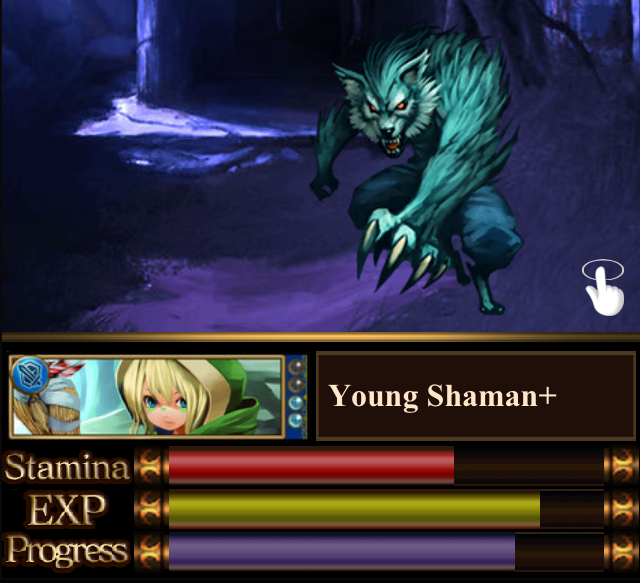In mobile games, quantity is more important than quality
Why the quantity of content in mobile games matters much more than its quality, as demonstrated by Rage of Bahamut, is discussed by Inside Mobile Apps editor Kathleen De Vere.
Not all the games currently topping the revenue charts in the Apple and Android markets are, sorry for the tautology, games. Some of them are nothing more than entertainment services.
You don’t have to look far to understand this. Any profitable “battler” challenges developers' ideas of a good game. The graphics quality, art aside, is terrible, the interface is not intuitive, there's practically no gameplay – just keep pressing one button.

Press and kill, that’s the entire gameplay
Despite this, such projects rake in enormous amounts of money. Riding the wave of its popularity, Driland from GREE in Japan was earning $26 million per month through IAP. Another notable project is Rage of Bahamut from DeNA, which remained in the Android revenue chart for 10 months, with its ARPDAU (average revenue per daily active user) being about $1 as of summer 2012. Card games like Ayakashi Ghost Guild from Zynga or Dark Summoner from ATeam are also quite profitable.
These products are so popular and addictive for one simple reason: they sell not gameplay but a continuous service that keeps players coming back. Essentially, games-as-a-service offer a massive amount of content, a community built around it, and a constant struggle for survival in a challenging environment.

A sea of events, a sea of content
Games as different as League of Legends, Team Fortress 2, and Magic: The Gathering share two common traits: each is insanely popular, and each is an ongoing entertainment service. Rage of Bahamut offers the same as they do, but in a more obvious way.
The real gameplay in them boils down to additional content: free bonuses, new daily levels, cooperative raids, and multiplayer events that last for a limited time. For engaged players, there's always something to do, and it's quite easy to get hooked. Simply integrating service components into an existing game can instantly boost monetization and player retention.

And something new every day
Last summer, Big Fish Games introduced Daily Mode in Fairway Solitaire: every day, the company added two new levels to the game. One was free, while the other was offered as an IAP. On weekends, the paid level might be longer than the free one or offer some bonus when completed. If a player completed a certain number of daily levels, additional content would be unlocked.
After introducing this seemingly endless stream of content, the game’s DAU doubled.
Not too long ago, developers placed significant emphasis on integrating social features into games, but “battlers” aren’t popular because you can share your scores on Twitter or invite friends to play via Facebook. Games like Fairway Solitaire attract users and their money because there’s always something else for users to do.
The main task when creating a game-as-a-service is not to make the best or most social project, but to create a game where the player won't get bored. This, according to Kathleen De Vere, is the secret to the success of Magic: The Gathering, League of Legends, and Rage of Bahamut.